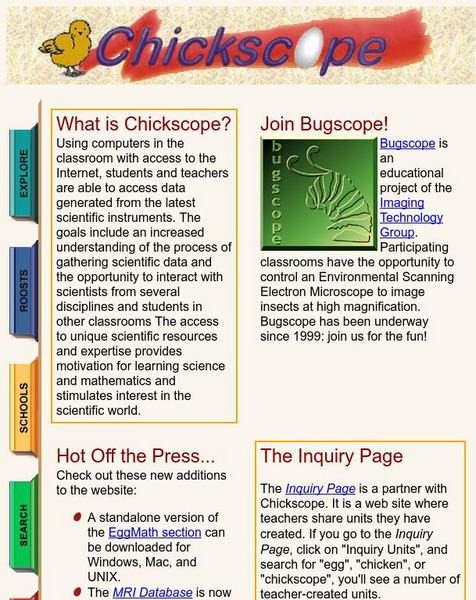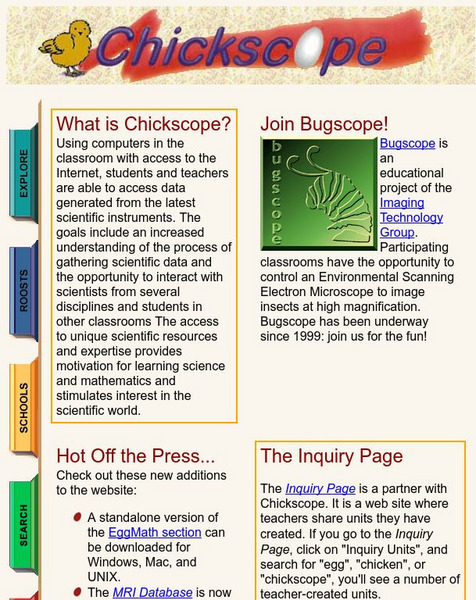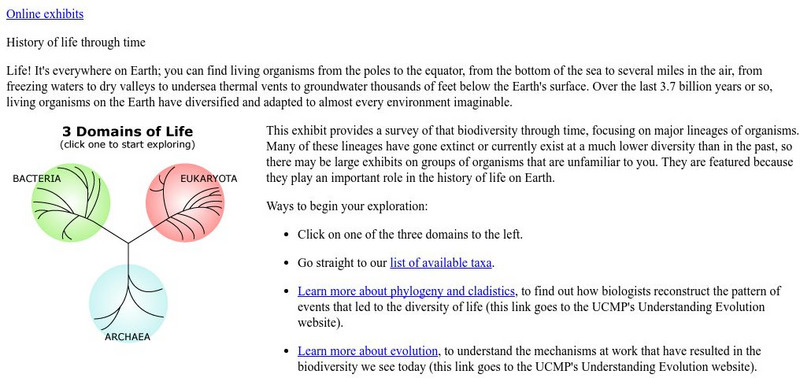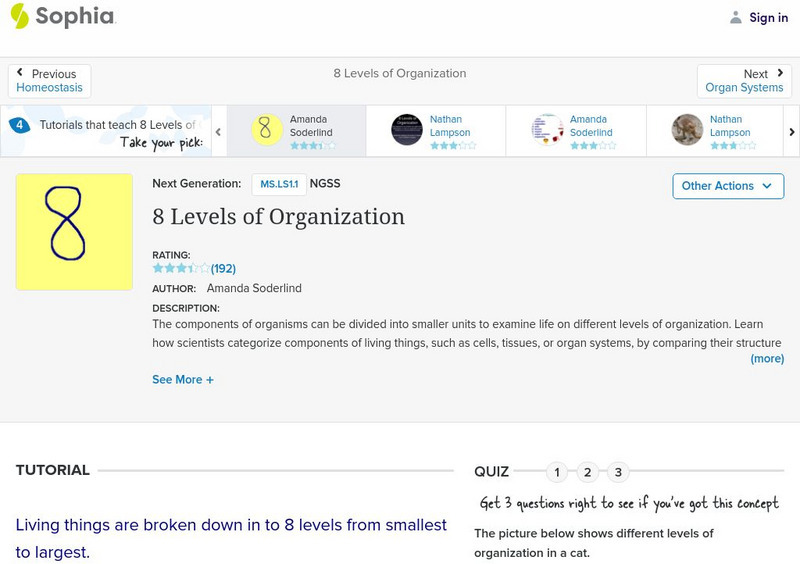Utah Education Network
Uen: Living and Nonliving
Third graders will be able to identify what is living and nonliving in the world around them.
Other
Vida: Living and Non Living Things
Study these four images when learning about living and nonliving things.
Sophia Learning
Sophia: Common Features of All Forms of Life: Lesson 2
This lesson presents the features that are common among all forms of living things. It is 2 of 4 in the series titled "Common Features of All Forms of Life."
Sophia Learning
Sophia: Common Features of All Forms of Life: Lesson 3
This lesson presents the features that are common among all forms of living things. It is 3 of 4 in the series titled "Common Features of All Forms of Life."
E-learning for Kids
E Learning for Kids: Science: Caribbean Sea: Mexico: What Is Classifying?
Christina wants to classify all kinds of different things. Help her sort things into main groups.
SMART Technologies
Smart: Living and Nonliving Things
Students define the characteristics of living and non-living things, identify living and non-living components of an ecosystem, and identify the roles of organisms in living systems.
ClassFlow
Class Flow: Living and Nonliving
[Free Registration/Login Required] Flipchart details characteristics of living and nonliving things, then asks students to classify. Activote questions are included.
E-learning for Kids
E Learning for Kids: Science: Scotland: How Can We Group Non Living Things Based on Characteristics/purposes?
Montgomery is a true Scot, and even wears a kilt. He works in his dad's store and needs help learning about materials.
Alabama Learning Exchange
Alex: Wanted Dead or Alive!
For this lesson students will identify the characteristics of living and nonliving things.
Science Education Resource Center at Carleton College
Serc: Investigating Insects in Nature
In this lab, students will collect insects while making close observations of living things. They will then classify insects into seven common groups based on characteristics discussed in the classroom.
CK-12 Foundation
Ck 12: Virus Characteristics
[Free Registration/Login may be required to access all resource tools.] What are the differences and similarities between viruses and living things? This tuorial covers the characteristics of viruses and viral reproduction.
Tree of Life Project
The Tree of Life Web Project
The Tree of Life Web Project contains information on living organisms including their history and characteristics. Over 3,000 web pages are linked together uniting all living things.
Alabama Learning Exchange
Alex: I Know What I Am, but What Are You?
During this instructional activity students will develop an understanding of how to classify living things and what creates the distinction among them. They will learn to classify living things by effects, environment, and activity.
American Institute of Biological Sciences
Action Bioscience: Evidence of Evolutionary Transitions
Charles Darwin's theory that all living organisms are connected in some way has been confirmed through intense studies over centuries. Understand the similarities that bond all things living to the same family tree by checking out this...
University of Arizona
Center for Insect Science Education Outreach: Getting to Know You: Meal Worms
Students become connected with nature by handling and caring for another living creature. Focuses on insect care and familiarization with a meal worm.
Science Education Resource Center at Carleton College
Serc: Looking for Living and Nonliving Things
Students will think about what is alive and identify the objects they observe as living or nonliving. They will record their findings in a journal, share them with their classmates, then illustrate a page for a class book of things they...
University of Illinois
University of Illinois Urbana Champaign: Chickscope
Learn how to build your own incubator and download your own "EggMath." Learn about mitosis, genetics, and more. Don't miss the "Yolk of the Day." This site is designed to allow classrooms to collaborate over the Internet with other...
University of Illinois
University of Illinois Urbana Champaign: Chickscope
Learn how to build your own incubator and download your own "EggMath." Learn about mitosis, genetics, and more. Don't miss the "Yolk of the Day." This site is designed to allow classrooms to collaborate over the Internet with other...
BioEd Online
Bio Ed Online: Water
The Science of Water Teacher's Guide provides a number of inquiry-based activities for grades 3-5 (although it can be expanded for other grades). The guide contains science lessons that enable students to explore water, behavior of...
University of California
Ucmp: The Biosphere: Life on Earth
Learn about different forms of life that coexist with us on Earth. This Berkeley article provides links to brief write-ups on the three domains of living organisms: Eukaryota, Bacteria, and Archaea.
Utah Education Network
Uen: Shrink to Fit
Learn how various living and non-living organisms help and react to one another in a small environment.
Sophia Learning
Sophia: 8 Levels of Organization: Lesson 2
This lesson will show the 8 levels of organization in living organisms, ranging from smallest to largest. It is 2 of 4 in the series titled "8 Levels of Organization."
Sophia Learning
Sophia: 8 Levels of Organization: Lesson 4
This lesson will show the 8 levels of organization in living organisms, ranging from smallest to largest. It is 4 of 4 in the series titled "8 Levels of Organization."
Sophia Learning
Sophia: 8 Levels of Organization: Lesson 1
This lesson will show the 8 levels of organization in living organisms, ranging from smallest to largest. It is 1 of 4 in the series titled "8 Levels of Organization."




















